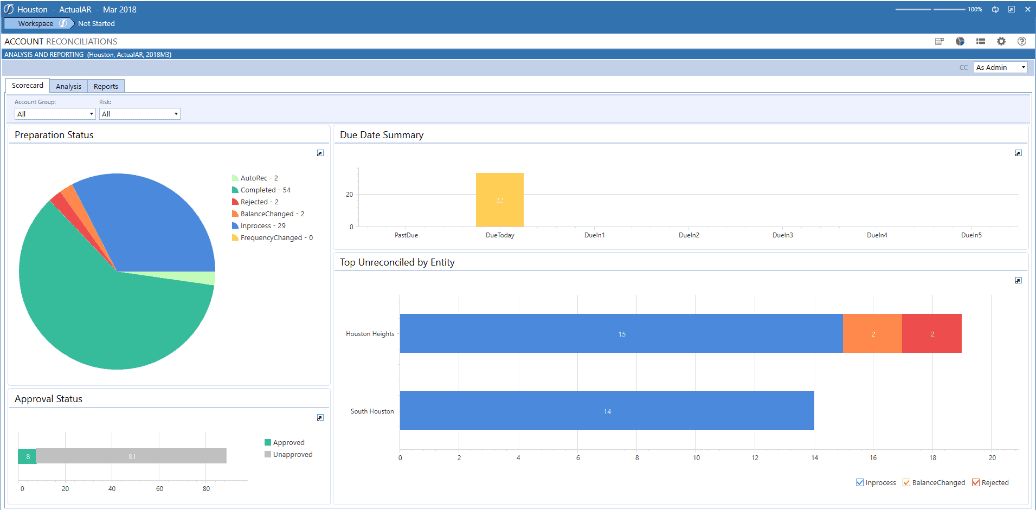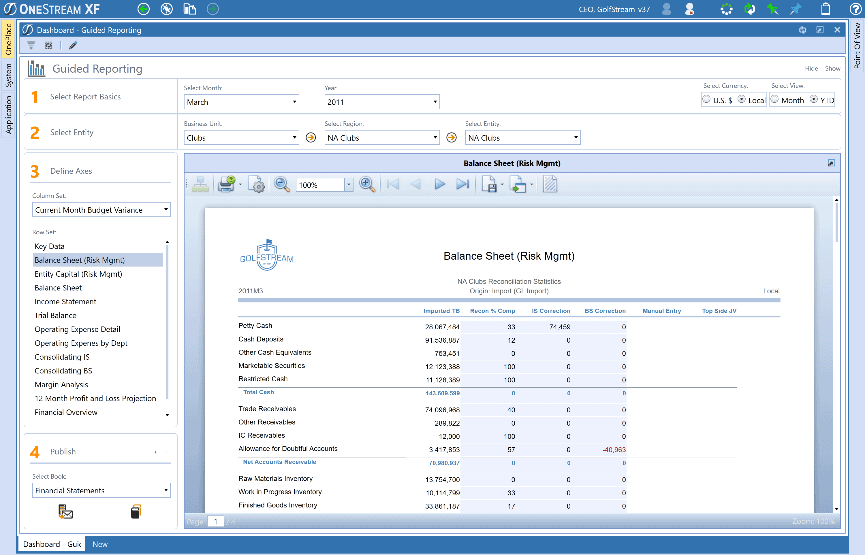The world of account reconciliations software has long been dominated by vendors such as Blackline and Trintech, only to be followed from a long distance by Oracle. Having worked in the early days of the account reconciliation software industry, when Trintech was selling payments devices and Blackline operated under another name (Osaba), it has been interesting to watch the industry evolve towards a certain convergence point.
Different Products – Similar DNA
If you were to compare most of the leading account reconciliations solutions on the market, it would be fair to say that they are very similar in functionality. One could argue that because they are designed to resolve the same business issues, it’s only logical they would have to be similar. Any competitive advantage a company would deliver, would be quickly copied by the others, especially in such a small industry where people move from one company to another.
Having had direct involvement both at Trintech and at Oracle with the product management teams, as well as quite a few ex-colleagues roaming around at Blackline, I think the similarities are due to a deeper reason – namely they all have the same DNA. They were all the product of a single mind. Someone who has now left the industry but has been instrumental in shaping the solutions that are prevalent in the market. With that DNA in place, the software can only evolve into a certain point, it sets a direction that is impossible to steer away from.
The core problem is that in the DNA of all these applications – they were mainly trying to replace Excel spreadsheets (Blackline even trademarked “No more bullsheet”), and Excel is essentially a two-dimensional solution. This was fine for the initial version of the software, as it has provided some great improvements in terms of automation of the process, provided transparency, and enabled faster cycles. However, this architectural design also has its limitation.
Finance is Multidimensional
Finance is not a two-dimensional world, limited to an accountant tying up two numbers or substantiating a GL balance. Enterprise customers have far wider needs, that none of the historical solutions on the market are capable to catering for.
Enterprise customers have a need to view their accounts not only from a compliance perspective, but also from an overarching certification, governance and a risk exposure perspective. For example:
Overarching certification: Whilst the accountants are responsible for the integrity of the numbers, many organizations will want certain teams of senior individuals to have a vertical review of the numbers by Team (e.g. Tax), Product or Business Unit. They need transparency and the capability to comment at various levels across their product line or business unit hierarchy to articulate variations from period to period. This commentary needs to be aggregated and reported at the most senior levels of the company to enable exposing certain changes in the business.
The certifications by these individuals in traditional account reconciliations software is done through a logical grouping, which requires a lot of maintenance by the accounting team and is also prone to mistakes and gaps.
IT & Finance Governance of the account reconciliation process: Before using an account reconciliation solution, accountants often rely on a “Financial Closing Checklist”, often in the form of an Excel-based list  indicating who is responsible for which task and by what date. When moving to an online account reconciliation solution, they want to provide more transparency into the progress of the reconciliation process.
indicating who is responsible for which task and by what date. When moving to an online account reconciliation solution, they want to provide more transparency into the progress of the reconciliation process.
This is fine when a company has 50-100 employees performing the work, but it creates some significant concerns when dealing with large teams, scattered all over the globe. Many activities are not reconciliations that need to be performed, they are additional tasks that are part of the governance and compliance framework that will guarantee the integrity of the process.
Some account reconciliation solutions on the market do offer the ability to add more tasks, that can be updated by the users, or automatically through a script. In reality, very few clients will go through the process of using this capability due to the cost and effort to implement and maintain those tasks. This leaves many activities still outside any monitoring.
Exposure monitoring: The monitoring of financial risk on the customer and the supplier sides is often a very challenging process within large organizations. Most BI reporting solutions, coupled with a data warehouse, will be able to run reports on the exposure by customer. It will indicate the aging of the invoices and possibly offer the ability to roll up clients into a hierarchy, all the way to the parent customer.
Although the exposure by customer has value, it needs to be balanced against the commentary of the person managing any late invoices. In other words, it needs context to understand the risk. Accruals against customers or provisions against suppliers are also key indicator of the total value of the risk.
Finally, to really understand the financial risk, an enterprise-class customer will need to add the variance analysis across the balance sheet to correctly understand its exposure. It needs to understand the content of its assets and liabilities across various perspectives such as a business unit, an entity or a geography.
The current account reconciliation solutions on the market are born from a two-dimensional world, where they only offer filtering options to try to present to the senior management some indication of the risk.
OneStream Software – A New Generation of Account Reconciliation Solutions
The architecture of OneStream originates from a completely different angle. The solution is a platform with shared components used by the accounting team, the consolidation/reporting team and the FP&A team, tax and other groups. It was built to connect and integrate source data from multiple data sources (usually GL/ERPs) and to unify financial consolidation, reporting, planning, analysis and data quality.
Through the OneStream XF MarketPlace, the platform can be extended to support account reconciliations, tax provisioning, people planning, capital planning and other processes.

One of the key benefits of having account reconciliations performed in the same platform as financial consolidation and reporting is that the GL trial balances, consolidated financials, and account reconciliations all live in the same system and are always in synch. That means GL accountants can begin performing their account reconciliations as soon as they submit their financial results for consolidation. And if there are adjustments made to GL balances, they will be updated immediately in the consolidated results, and in the reconciliation. There’s no need to move data into a separate account reconciliations system.
Leveraging OneStream’s Extensible Dimensionality®
The direct connectivity to the GL/ERP and the concept of Extensible Dimensionality®, which none of the other solutions have, allows OneStream to go beyond what other solutions can do. It’s easy with OneStream to maintain multiple entity hierarchies, customer hierarchies, product structures, complex account lists, and meet the more detailed needs of various business unit teams simply because they reside in their own dimensions. When the data is loaded, the system will check the integrity of the data, transform and validate data far beyond what other solutions can provide.
That Extensible Dimensionality is the key ingredient of an overarching certification process. It allows senior staff to slice and dice data from the highest level, and down to the transaction details without ever leaving the solution. For example, a senior controller can review a single accrual with the comments the accountant made and contrast it with the total AR exposure of this customer offer at a global level.
Similarly, when performing variance analysis, the controller will need to roll up an account hierarchy to understand at the total balance sheet level where the process stands – and the risk the company is running.

From a dashboarding and reporting standpoint, this means the GL team can provide very effective risk-based reporting for the company as a side-effect of the work they do. OneStream provides about the same level of automation as other solutions in the market; in addition, it will save the accounting team a lot of time in preparing such information and will add a lot of value for the company.
The other great value for the enterprise-class customer is the interaction with the consolidation team. By virtue of processing the accounts in a multi-dimensional perspective, it will resonate a lot closer to the consolidation team which is used to working in a similar way. This transparency into the GL closing process, as well as in the consolidation process, greatly reduces the risk of a material item being missed and therefore of a restatement.
Customer Example
AFL, an industry-leading provider of fiber optics and related equipment for the electric utility, broadband, communications and other industries selected OneStream XF for financial consolidation, budgeting, forecasting, data collections and cash flow reporting.
AFL was able to extend their OneStream investment via the Account Reconciliations solution from OneStream XF MarketPlace. Replacing Blackline, the OneStream Account Reconciliations solution was easy to deploy, and since its integrated with OneStream XF, allowed line of business users to start their account reconciliations soon after their trial balance data is loaded. With Blackline they had to wait until after the books were closed. This has resulted in a 75% improvement in the speed of completion and annual savings of roughly $100K per year.
Learn More
To learn more, visit the Account Reconciliations page on our web site. For even more information, watch our recent webinar titled “Aligning Account Reconciliations and Financial Reporting with OneStream.”
Get Started With a Personal Demo



